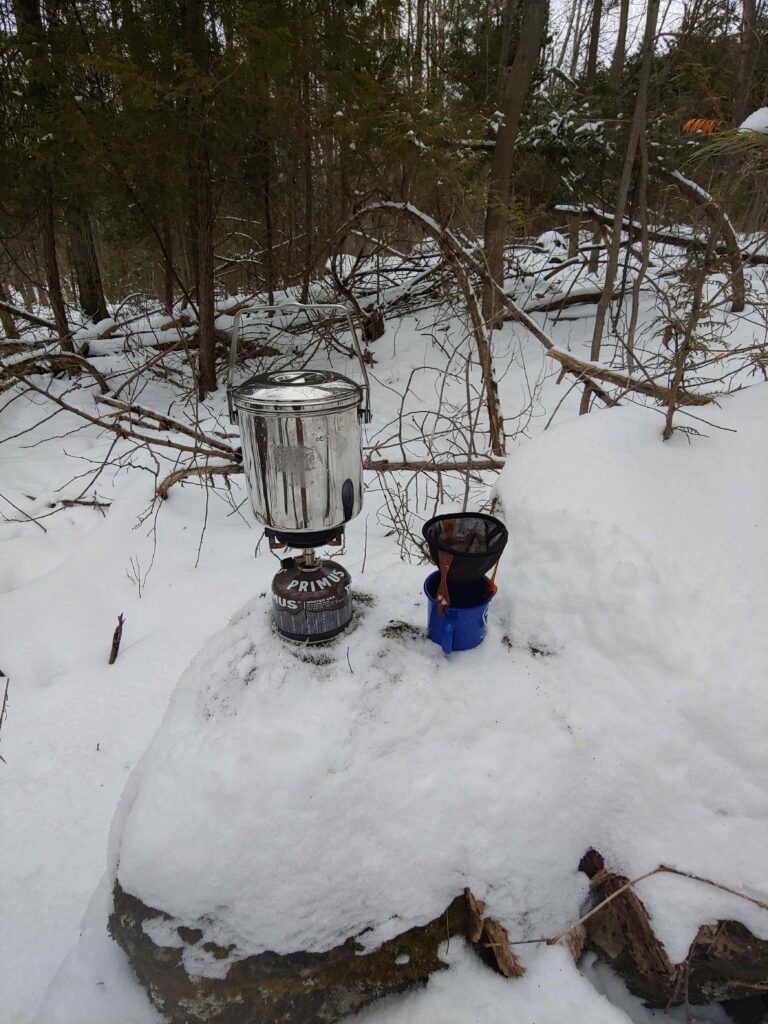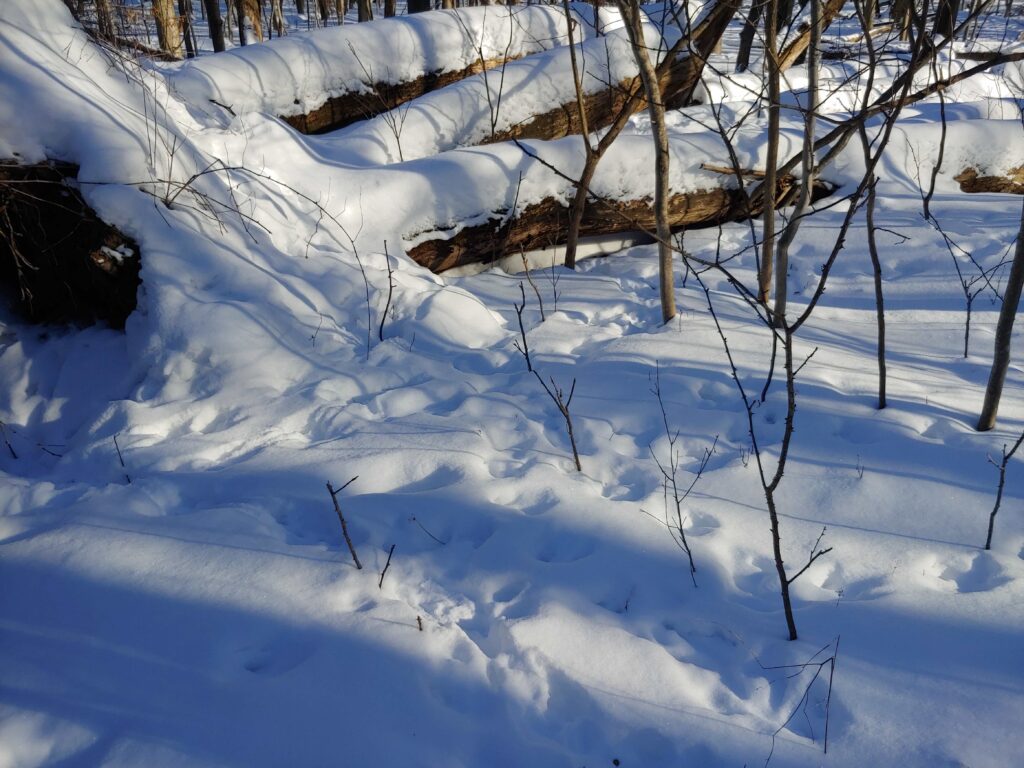Take it Outside!

Don’t let the frigid temperatures put you off – getting outside during the winter can be both enjoyable and therapeutic, as long as you do it right. With that in mind, Jason Allen gives a few tips, tricks and words of wisdom on hitting the trails and making the most of winter in Hamilton.
It’s winter now. Snow has fallen. And melted. And fallen again. Time for blankets, candles, mugs of tea or hot cocoa and fine-tuning your whole hygge routine. Right?
Scooch on up a little closer to the fire and let me tell you what you’re missing.
Winter is one of the best times to get out and explore our city’s natural areas for a number of reasons.
One: No bugs. Nothing biting you or trying to fly into your ear (why do they always do that?).
Two: No crowds. Everyone else thinks the same way you did before you read this article, so they’re at home while you’re enjoying nature’s splendor in relative solitude.
Three: It’s really pretty. A blanket of snow makes natural spaces just that much more magical.
Four: Did I mention no bugs?
Getting out in the winter and enjoying yourself, however, is more than just a matter of throwing on some boots and a winter jacket and heading out the door. There are a few things you should do and should bring to make your experience comfortable and memorable.

First, make sure you are dressed for the weather. In the winter that means a snug base layer, preferably not cotton, a loose sweater or hoodie, and then your winter jacket or puffy. Warm socks are also essential and be sure not to forget a warm toque or hat, as well as gloves or mittens.
Stopping for a snack is also a wonderful, and for me, an important, part of the winter hiking experience. You burn a lot more calories when you’re cold and moving than any other time of year. A high protein snack at the mid-way point can keep your energy from flagging, warm you up and keep little ones from complaining the whole way.
It’s also a great idea to bring along hot drinks for everyone. But what if everybody wants something different? Do you bring four thermoses? Not at all. Fill a thermos with boiling water, and bring mugs and hot chocolate mix, instant coffee or tea bags for everyone, and let everyone choose their favourite drink. If you don’t like your coffee black, but don’t want to carry a leaky container of milk, throw a couple of scoops of hot chocolate powder into your mug for what my kid’s best friend once called a “ratchet mocha.”
Even if you don’t have a hot drink, make sure to drink plenty of water, as dehydration is a major contributor to feeling cold.
Consider your footwear carefully. Early in the winter, it’s all about mud, but you should always be watching for patches of ice where you could slip and get hurt. As the season goes on and the snow falls and is packed down, trails can get icy. And because ice takes a lot longer to melt than snow, that ice can persist on trails into well into March.
A pair of micro-spikes for your shoes, or something similar like good old-fashioned Yak Trax are an essential item for moving on trails in mid-to-late winter. They will give you the confidence you need to cover ground at a reasonable walk, and especially to go down hills without feeling like you’re about to go for an unplanned sled ride.

As always, tell someone where you are going and what time you expect to be back, so they can be sure to sound the alarm if you end up stuck somewhere and need help. A good winter emergency kit for your vehicle is not a bad idea either.
Finding great hiking spots in winter is no different from finding great trails in the summer, although having a sense of the geography can be helpful in avoiding icy trails along the edge of the escarpment. For that reason, I love the topographical maps of the Bruce Trail. You can download and print individual maps from the Bruce Trail Conservancy’s website for $3 each, or just install the Bruce Trail app for maps on your phone. It will give you access to the maps along with the latest detours and trail info.
Other great resources for hikes include the Hamilton Conservation Authority website, the Royal Botanical Gardens, and a great book called Loops and Lattes, available at your favourite independent bookstore.
As for what to do while you’re out on the trail? Winter is a great time to do some birding, as there are no leaves on the trees, and you can spot the birds from further away. Chickadees and dark-eyed juncos are common winter birds that are both fun to watch.
But my favourite winter activity is to locate and try to identify animal tracks in the snow. There are lots of great resources online for identifying which track belongs to which animal, and part of the fun is seeing where the animal was going and what it was doing. A trail of eastern cottontail tracks that end in the imprint of an owl’s wings can tell a story as dramatic as anything you’d find on a streaming service.

Finally, it’s always a good idea to know your limits and pay careful attention to the forecast. Mixed precipitation and high winds are a no go for me, but there is nothing I enjoy more than hiking through big, soft fluffy snowflakes on an early spring walk.
Winter, as I’m sure you have guessed, is my favourite time of year to get outdoors, and with a little preparation and planning, it might be yours too. Or at least might be a good enough reason to shut off the electric blanket and go for a little adventure. Tell the chickadees I said hi.












